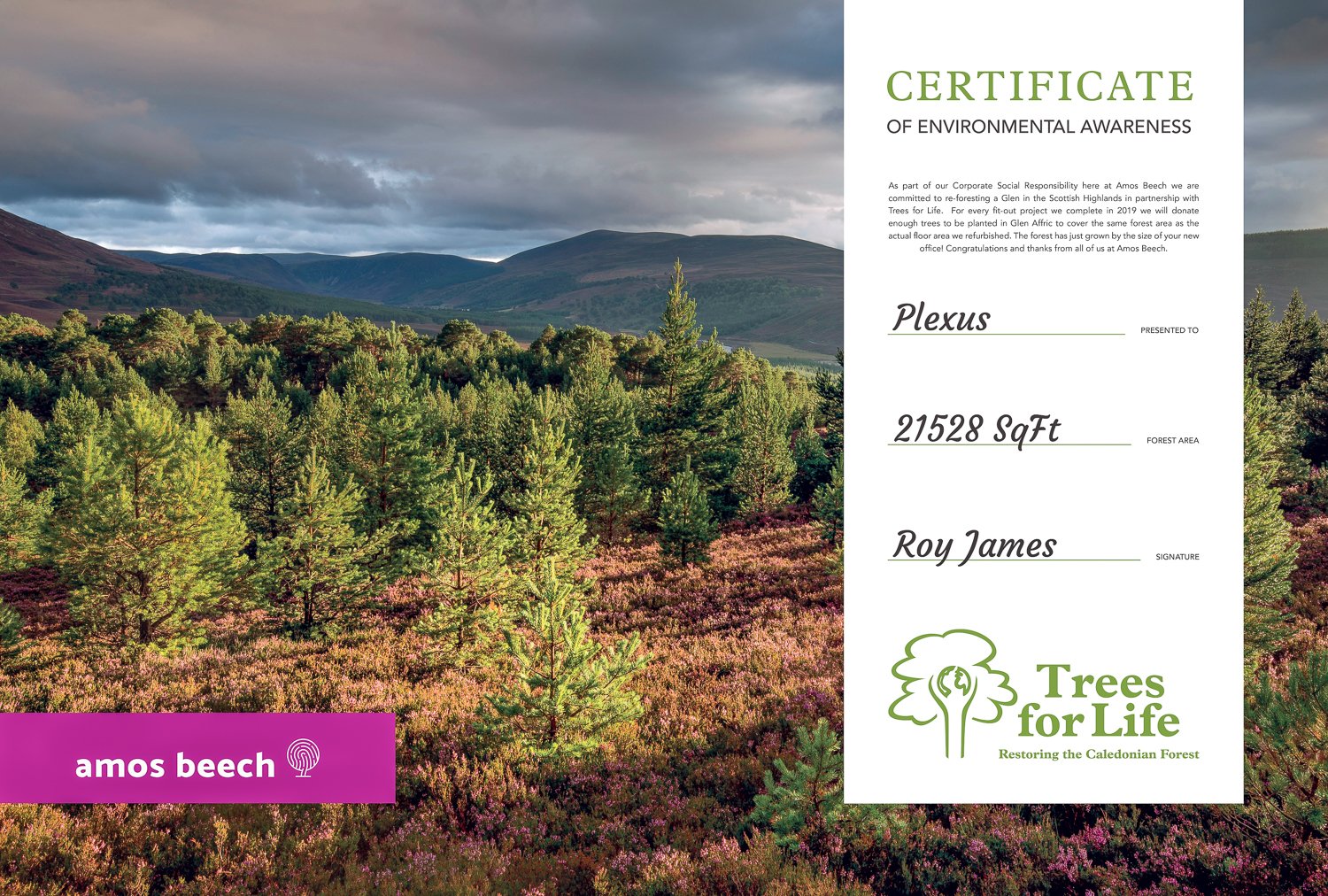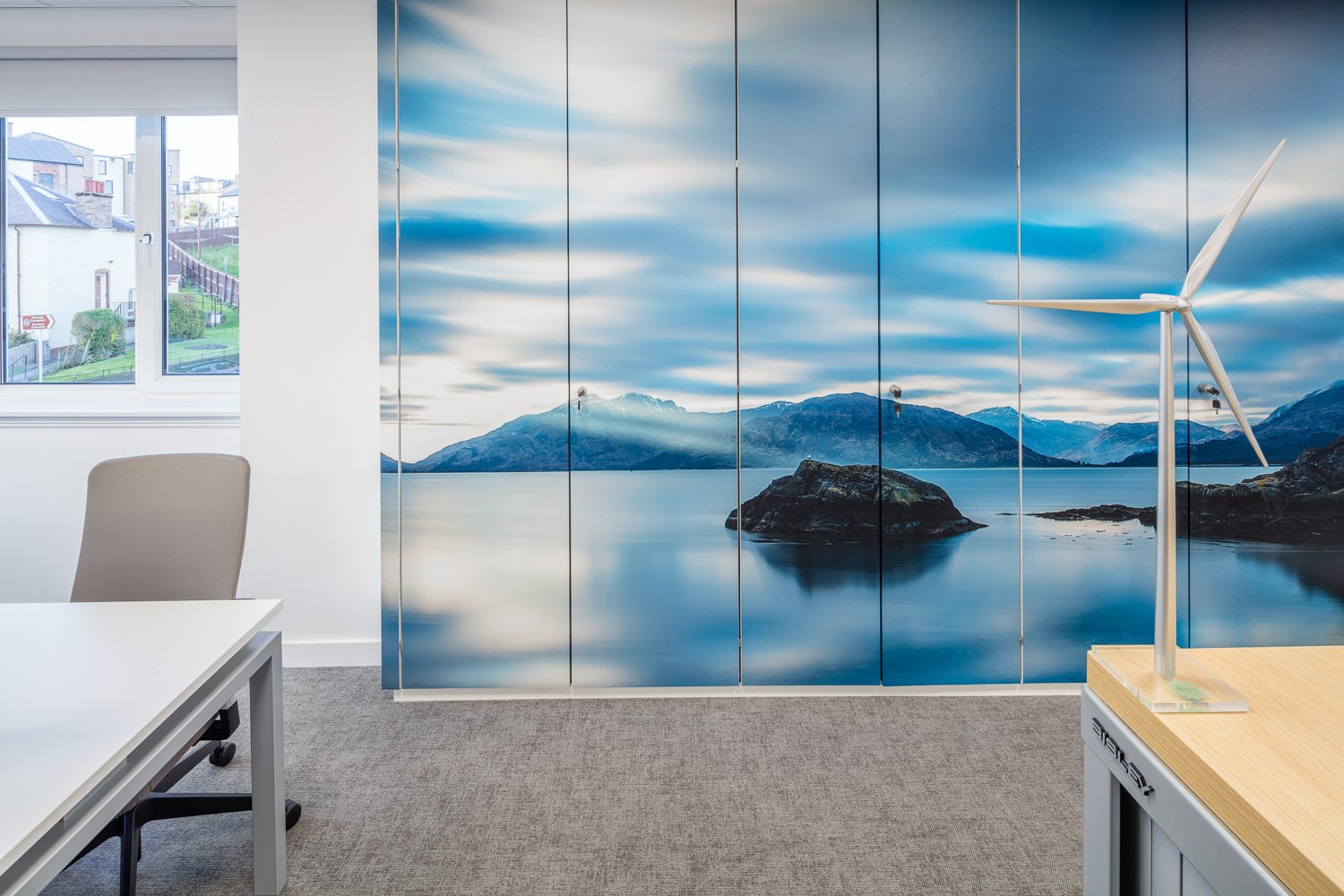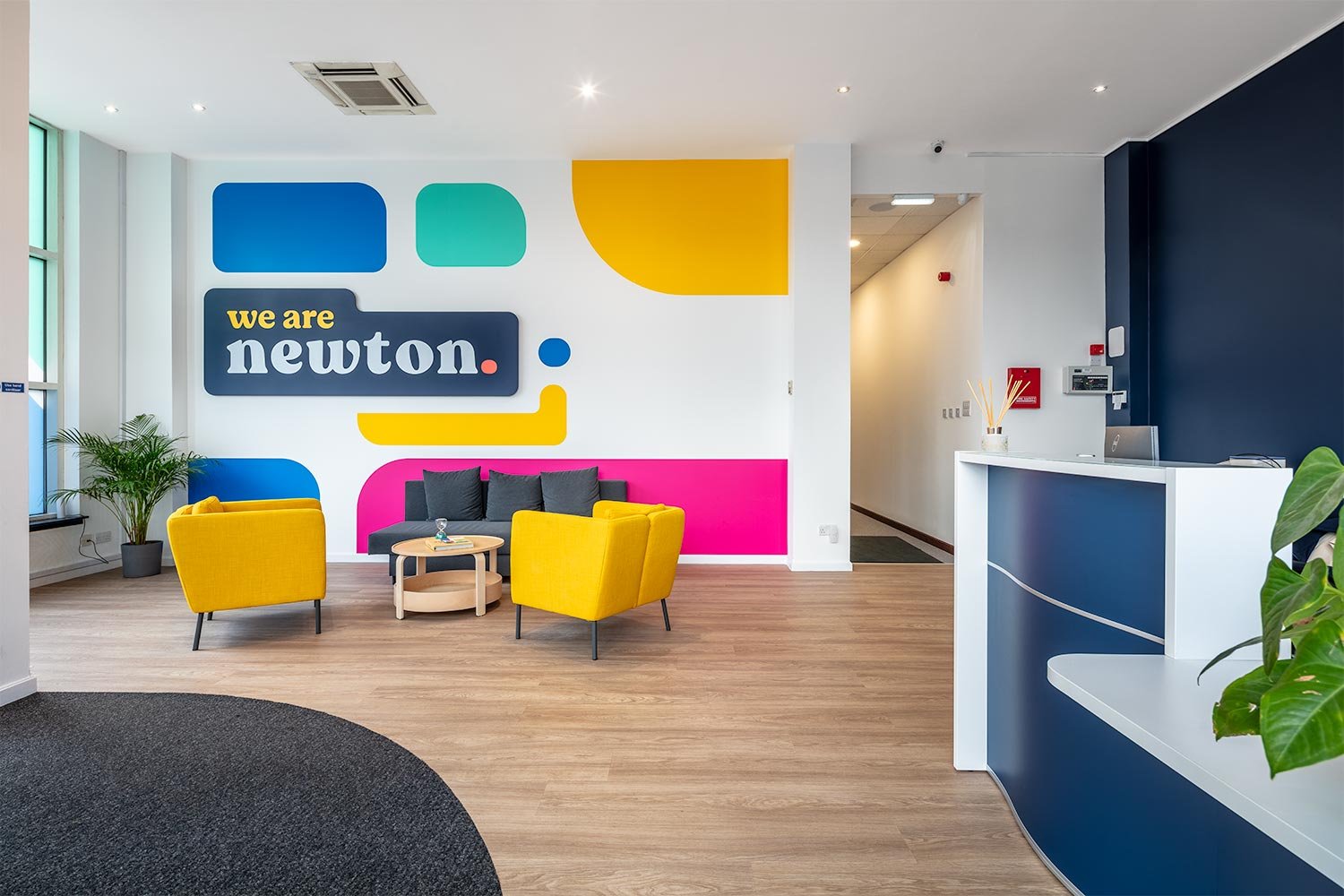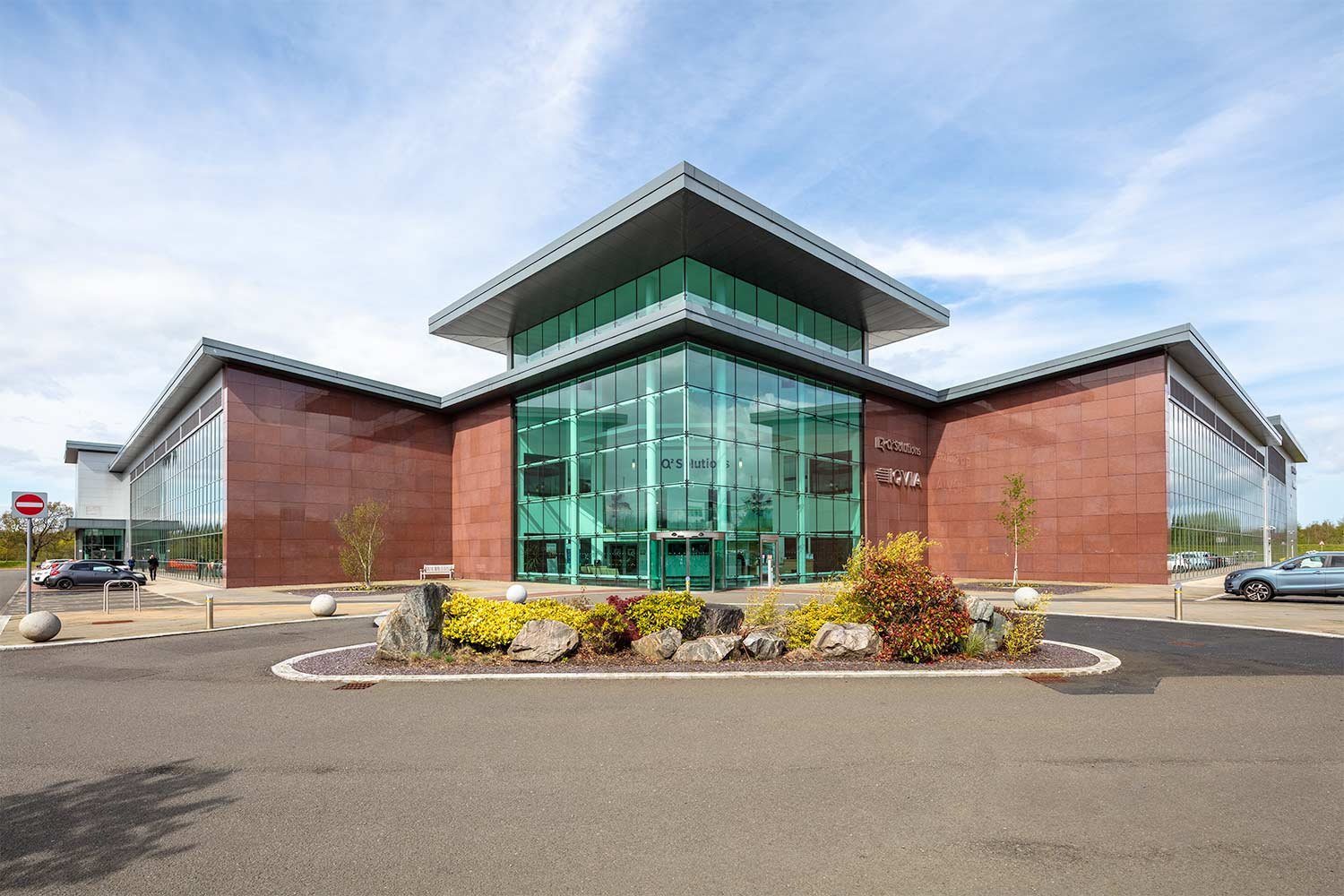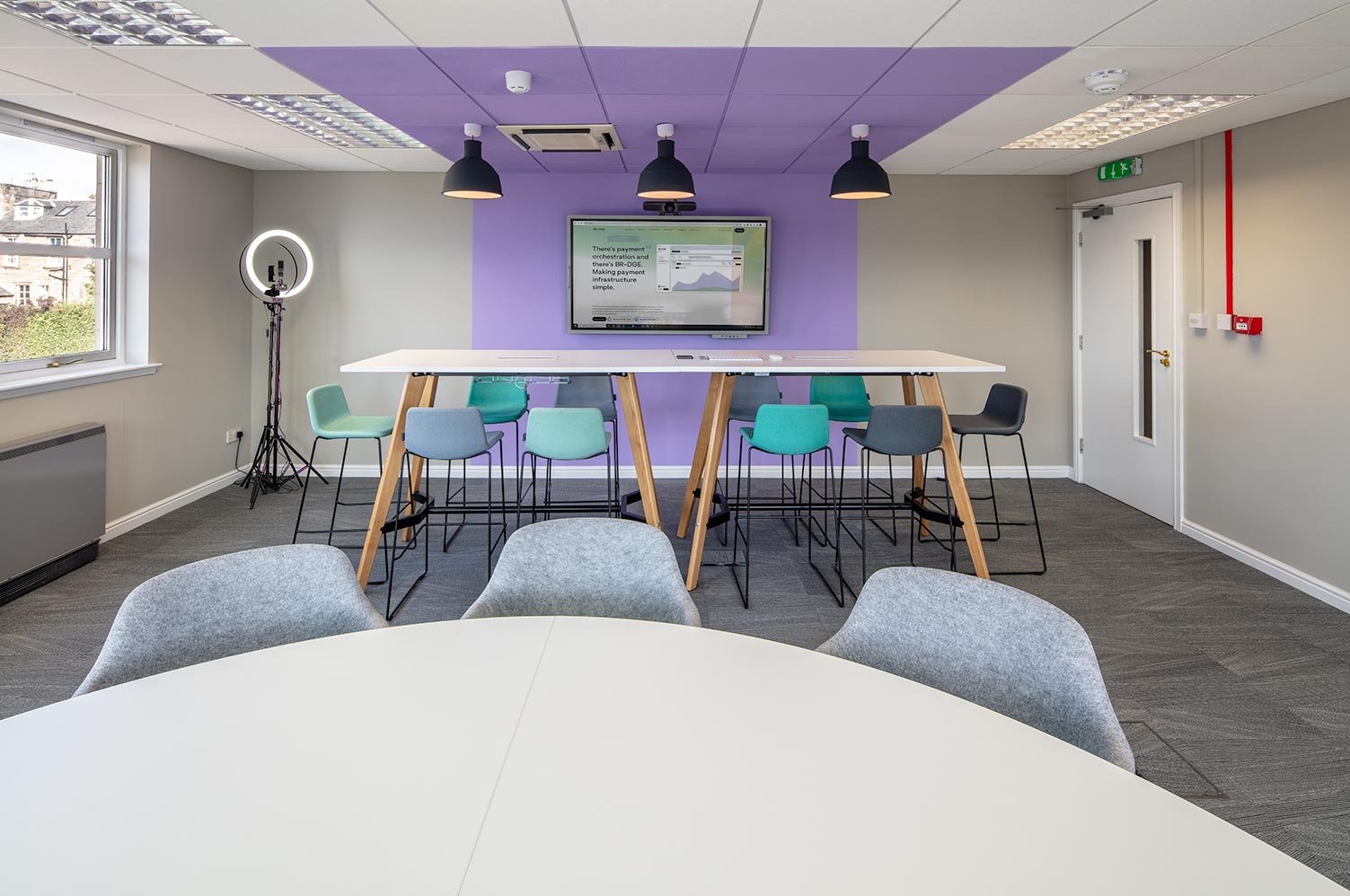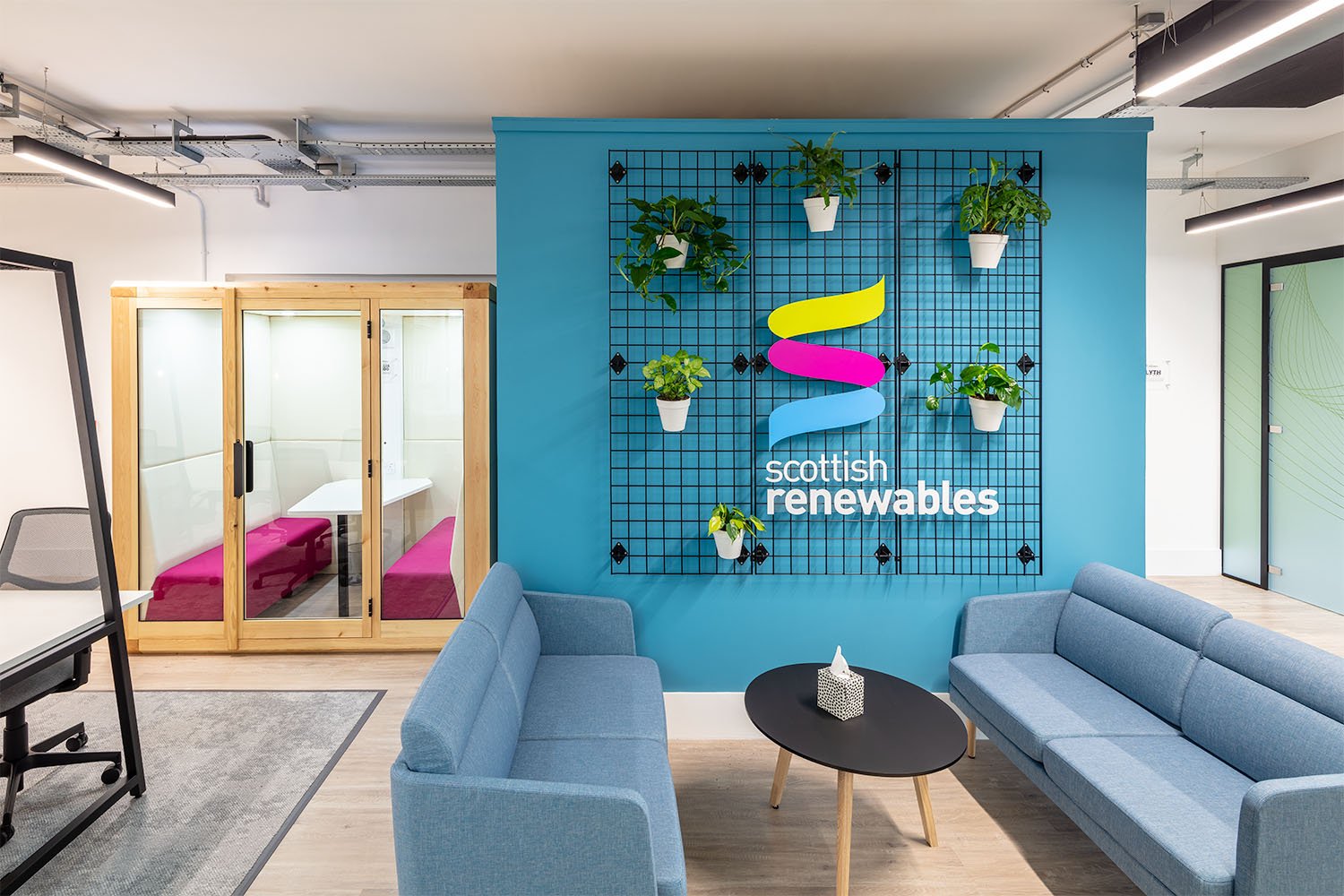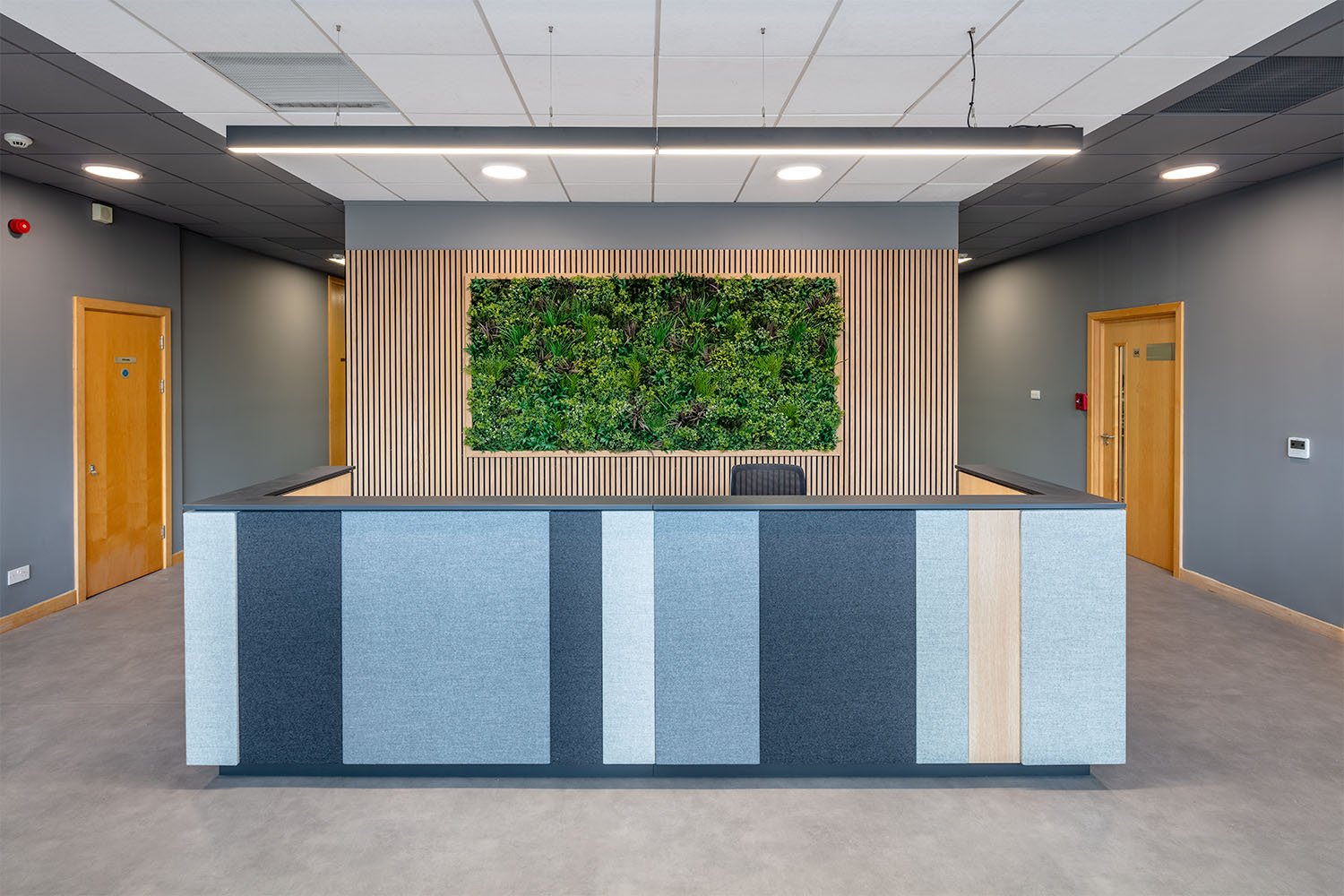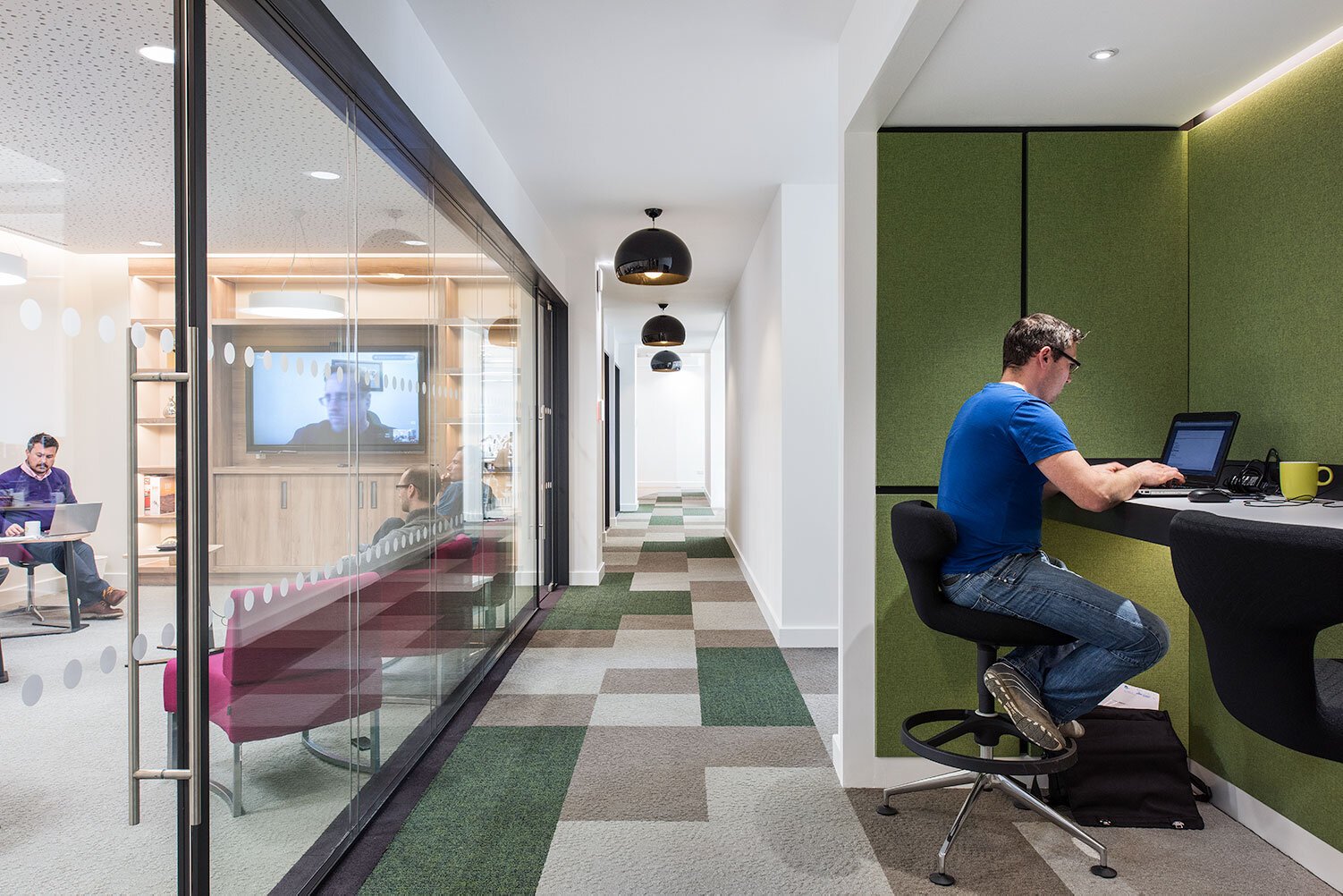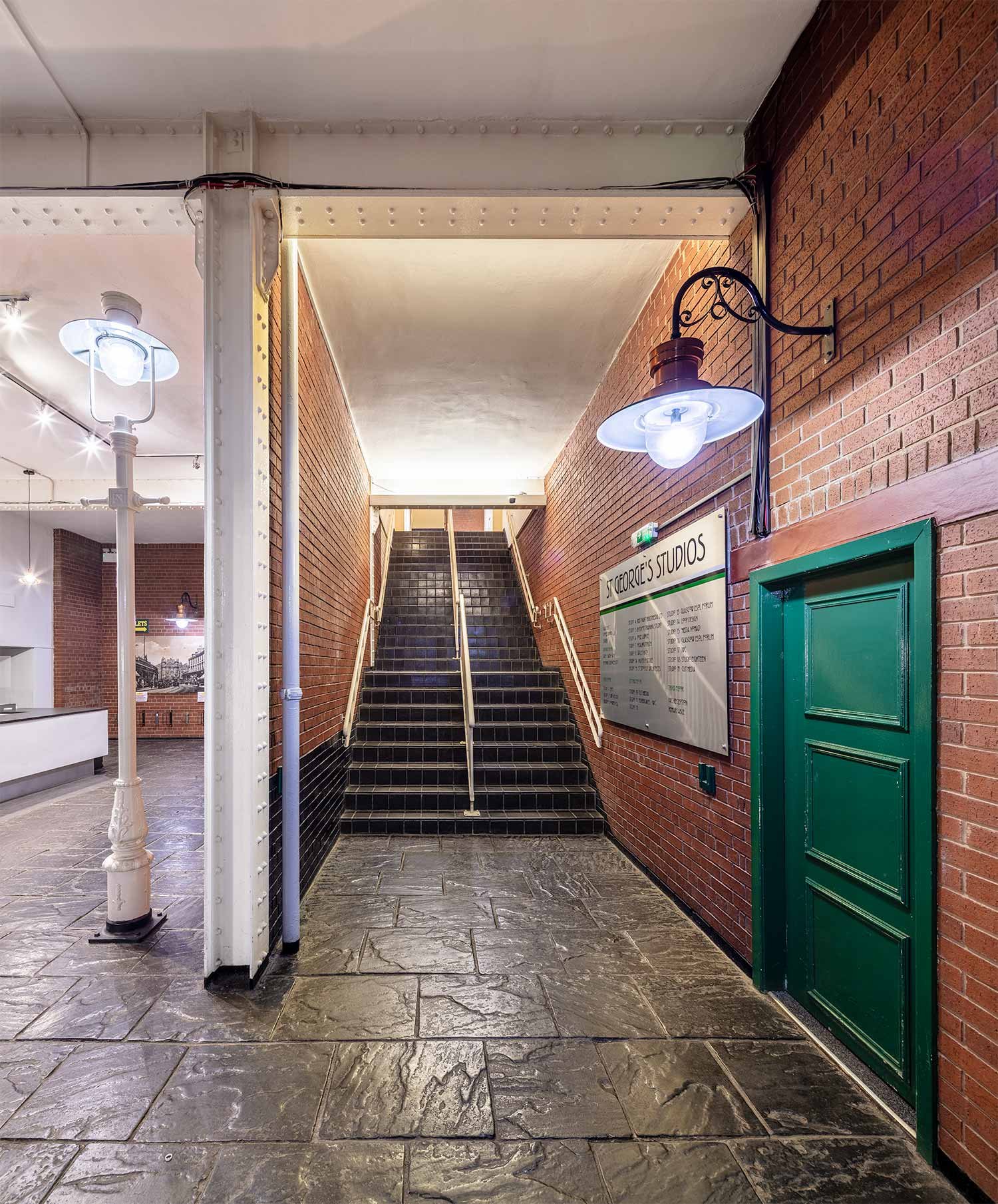Business Disruption – Moving or Refurbishing Offices is every MD’s nightmare
Note: this blog was written way before the pandemic, but probably even more actual today!
Should I Move or Refurbish My Current Office?
Tough question, right?
Moving to a new office entails a lot of stress. You need to find the right real estate agency to help you find the right property. Then you need to negotiate and decorate. Plus, should you keep some or all of your existing furniture? Should you buy everything new?
Refurbishing isn’t that easy, either. The main challenge is that you have to keep operations going, stay productive and minimise business disruption. All this while you also supervise a project that can take weeks or months.
Can you really find out what’s the best alternative on your own? Can you factor in all the business hours lost in both cases, along with the investment? And, more importantly, how do you know for sure that you’ve outgrown your current office space?
At Amos Beech, we have consulted dozens of companies that were ready to spend a lot because they thought they needed a bigger space. Our research and expertise revealed that all they needed was to get more out of their current one.
Yes, a skilled team of designers and office refurbishing experts can help you save a lot on office real estate by ‘simply’ re-arranging the furniture in your office.
But that’s not always the case. Sometimes you really need to move. The same team of expert designers and contractors can help you turn your new office into a space that every single employee loves.
A blog by Roy James:
Moving a business is not easy, there are so many things to think about, so much to do, along with minimising the disruption to your organisation, so its little wonder that moving or refurbishing offices is often low on the agenda until the last minute. That brings about its pressures as you realise too late that you may have to make a rushed decision.
Moving or refurbishing offices?
Refurbishing an existing office is almost harder. Although there is less to arrange, in one sense, there is the added complication of trying to maintain the services and revenue of your company yet expect it to bear with the disruption which potentially can run from weeks to months.
Edinburgh Park, Scotland’s premier business park
Even when you have made the decision of whether to move or refurbish, where do you start? Where did that decision come from? Was it rushed or an informed, logical decision based on robust consideration and challenged against the strategic growth plans of the company?
This is clearly outside your comfort zone. You want the best for your company – minimal disruption and continuity for your customer but along with it you need to deliver on company goals and maintain value to shareholders.
Let’s explore this scenario. Your lease is up for renewal - you obviously have two options - do you stay or do you move? And, as we all know, there are pros and cons to moving or refurbishing offices. The question is, how can I make an informed decision?
One way to do it
Who should you ask? Or is it my decision? Should I know what to do?
Yes, there are consultants out there that would advise and give well informed advice but it doesn’t end there. They are often from a big, even global company and before you know it you are in the maze of consultancy that is both expensive and protracted as you engage with just about every consultant under the sun.
Maxim Office Park Lanarkshire, between Glasgow and Edinburgh designed by Glasgow architect Keppie Design
Don’t get me wrong, you will end up with first class advice but I have two arguments - it will be both expensive, and quite frankly, take months which as I started with, it is time you often don’t have.
But is there really another way?
Actually, there is, it’s based on trust and comes from a sector of the market you least expect.
Before I start, though, let’s talk about trust as it’s one of the most valuable and effective attributes in business. In scenarios such as this it’s pretty crucial. For this to work we need to engage with someone who is wanting to help you and trust is a two-way street.
This sector is quite unique, often labelled as office furniture suppliers or fit out companies but actually quite different.
And, yes, just like any other company, they are looking to create revenue and grow profits but you are talking to the right person one time here!
Okay, that sounds hackneyed and I apologise but it’s true, just please let me explain.
So, let’s briefly (if I can) expand this scenario out a little further.
Your lease is expiring and you need to make a decision on what to do. You realise this is not a decision you can make without being informed so you go to a reputable consultancy firm or architect practice in Glasgow or Edinburgh who, for a fee, help you evaluate the space you have, the growth plans of the company, the vision and strategic plan and come back with a suggestion of what they feel is what you need to do. But that’s it, they suggest for you to move, they have suggested how much space you need to achieve your growth plans and now… now what?
From here you are often now on a journey with this consultancy as they offer to find you space. They even offer to manage the whole project for you (what a relief!) and go down a merry passage of contracting interior designers, electrical engineers, mechanical and ventilation consultants, quantity surveyors and project managers as they create the perfect solution for you (oh and they take a cut of everything that happens).
Moving or refurbishing offices, is there another way?
But there’s just a few points they missed.
You are now pretty alienated from the process; all these consultants are designing something that they want to be proud of (and rightly so) but that tends to drift away from any budget you may have had. You end up with a Rolls Royce design and, although you have fallen in love with it, you just can’t really justify the expenditure, and more than this to get this far the process has cost you a lot of money!
So here you are with a project over-budget, with a re-look only going to cost more money and time and this is the point that if you hadn’t already been disillusioned by this whole process you are now.
I could go on. Say you even get on site, you have a consultancy pulling together different trades to realise the project, they have ever so cleverly gone to tender to get you the `best price’ but the disconnection carries on site. The electricians fit the floor boxes, the furniture company fit the desking, and, lo and behold, they weren’t communicating with each other during the final design and half of it doesn’t match up creating more delays and potential cost.
The other way
As I said, it’s a different approach and it’s a single, unified one to all of the above. These companies come in and work with CEO’s and MD’s to evaluate the needs of the business. They have no ulterior motive as to whether you move or stay, they aren’t looking for a cut on any third party consultancy, they just have a great understanding of what is important to business.
So you go through the same process of answering the questions about moving or refurbishing offices, but in a completely different way. Yes you will need to engage with a property agent to find a property but you are looking for one based on a decision made by someone who has no interest in property letting. Going on from that they are not just trying to provide a solution, they are working to a budget, have in-house capabilities that do not require expensive third party input and, most importantly, are keeping you engaged and close to the decision whilst co-ordinating all the different phases of the project.
Maxim Office Park Glasgow, state of the art architectural design
On site, being the client, connection is much closer, things happen so much quicker, changes you may need to make don’t need to through a long process, (and believe me it is long) it goes direct, costs a lot less and contractors are working to a common goal rather than just focusing on their own scope of works.
So where is the catch?
There is none, but as I said it’s based on trust. These companies invest a lot of time up-front helping companies make informed decisions and often it’s not until a lease is signed, when they have done months of work, that they get a return. For them it’s a worthwhile investment, for the client it is good value as they get what they need, when they need, with direct input whenever they like and a partner that is only interested in delivering something fit for purpose.
The hard bit is when corporate say `we need to go to tender’ as often they say that at the point when these companies have invested heavily in the project, especially as they don’t say that when they are using a paid consultancy as they know they are getting competitive comparative quotes from them . It feels good value but all you are actually getting is a protracted, expensive solution that can be scarily detached from the original CEO’s vision. Please everyone let us understand and embrace the speed of trust.
I know blogs are meant to be informative, unbiased (not long – please forgive me) and not `selling’ but sorry, I can’t say all this and not tell you where to go, I’m too obsessed, too passionate and believe in ourselves to this extent (and I’m only writing this as it was an in-house competition) but you need to talk to Amos Beech.
Contact me or one of my colleagues via:
This was a blog by Roy James
Amos Beech ran an internal blog competition. The above article, written by Roy James, won the category for being ‘website worthy’. Roy was the Operations Director at the time (see video below) and he is known for being a man of few words. Consequentially, we were all very impressed with his 1300 word blog! He has made his point very well.
Date of first publication: December 8th, 2018
For more info about some of the fit out and refurbishment projects that we have done click on the button below:
Offices as a Service? The Changing Nature of Commercial Property in 2021
There’s no doubt that the coronavirus has been something of a game-changer for various industries and marketplaces, with some entities having fared considerably better than others since March 2020.
The commercial property market offers a relevant case in point, with the construction of new offices in central London having declined by 50% in the six months to September 2020.
The UK capital is something of a trail-blazer in the world of commercial property, so it should come as no surprise that investment volumes in Scotland also fell to £1.3 billion in 2020 (down from £2.1 billion during the previous year).
This decline has been triggered by various factors, of course, from the rise in business closures to the increased focus on home and remote working in the UK. While this trend is set to continue, however, there’s also a growing demand for the development of tailored, collegial and safe workplaces that allow for face-to-face contact between employees and clients alike.
Re-imagining the Office Space in the Wake of Covid-19
While a number of global corporations (including Amazon and American Express) have committed to extended remote working opportunities indefinitely, the majority of small businesses are keen on getting their staff members back in the office as lockdown measures are eased across the globe.
As we’ve already touched on, however, both employers and employees want to re-imagine workplaces in a post-Covid world, enabling colleagues to work safely and productively without encountering the social and cultural disconnect associated with operating remotely over an extended period of time.
The rigidity and inability of modern workplaces
In this respect, the coronavirus has been something of a revelation, raising the question of why something as challenging and complex as remote or hybrid working remains such a desirable option for employees even outside the confines of a global pandemic?
The answer clearly lies in the nature of ‘modern’ workplaces, their rigidity and inability to allow for either social distancing protocols or the individual needs of specific business-owners.
Fortunately this offce has undergone a bit of a face lift 🙂, you can check it out here!
How Will Workplaces Change Post-Coronavirus?
Clearly, the trend set in London will become most prevalent in similarly competitive and crowded marketplaces, with Edinburgh offering a relevant case in point.
There’s undoubtedly a growing pressure on square footage in the Scottish capital, as geographical restrictions and increased demand continues to place constraints on the ability of developers to build and expand new commercial properties.
This trend is also prevalent in Glasgow, of course, where development rates have continued to stall over time and the total vacancy rate for Grade A office spaces declined to an all-time low of 9.9% in 2018.
The commercial property market needs a increasingly flexible and comprehensive approach from landlords.
This, combined with need for increased social distancing, demands an increasingly flexible and comprehensive approach from landlords and developers alike, who must commit to collaborating with clients when fitting out spaces and focus on providing bespoke workplaces for tenants.
This type of focused and bespoke approach will definitely benefit businesses that want to create a safe and manageable workspace as the Covid restrictions ease, while potentially optimising occupancy rates for clients across a broad range of industries.
This collaborative way of thinking certainly inspired the office refurbishment in Fugro’s new location at the Hariot Watt Research Park, as we worked closely with the landlord (and client) to create a CAT A fit-out that tailored everything from ceiling heights and partition placement to mechanical and electrical installations to suit the exact needs of the client.
If we extend this example to a post-Covid world, we begin to imagine how office spaces can be structured and refurbished to optimise space, drive efficiency and help specific clients to maximise their commercial property budgets.
What Does This Mean for the Commercial Property Market?
If we look at this trend in its wider context, it’s apparent that it has its origins in the type of serviced office space that has become prevalent in major UK cities like London, Leeds and Manchester.
Serviced office space essentially refers to furnished and fully-equipped and pay-as-you-use locations, which are usually managed by independent operators. They will rent out single serviced offices or whole floors on rolling contracts to clients, affording them access to ready-to-utilise and viable locations in double-quick time.
However, these spaces are targeted at types of business rather than individual clients, while their largely generic workplace design offers little in the way of flexibility and social distancing capacity.
By evolving the concept to create bespoke spaces for specific clients, however, we’re now seeing a scenario where offices are being marketed as a service (in the same way that Saas has grown into a comprehensive licensing and delivery model for software).
This is a huge opportunity for stakeholders like landlords and developers to shape the future landscape of the commercial property market, as it evolves to meet the changing needs of clients and adapt to variable market conditions.
Read more about how we can help:
Date of first publication: December 12th, 2021
The Office Is Dead. Long Live the Office!
Is the Office Dead? Not by a Long Shot! Just Transforming.
Here’s How to adapt Quickly
If I had a penny for each headline saying that office spaces are dead, I’d be too rich to care about this overdramatisation. The office has changed so much over the centuries that it’s barely recognisable now.
Has it died and then came to life again and again and again? Not really. It just transformed to meet new needs, to accommodate more or fewer people, and to respond to the demands of the workers.
This is exactly what is happening now. Along with the entire world, the office adapts.
There’s even a big upside to it. Remote work is by no means a new thing. Whether you call it remote working, working from home, flexible working, or digital nomadism, the concept has been here for a while.
And you know what? People have always loved it.
Even before the pandemic, 92% of Millennials (the majority of office employees) wanted the option to work remotely. At Amos Beech, we have always supported this. Our team has done it before the pandemic and we continued to do it during it. This flexibility is one of our best strategies to attract and retain talent.
On top of that, we have worked with dozens of UK companies, helping them adapt their offices to the ever-changing needs of their employees and create more flexibility. But more on that later.
First, let’s take a closer look at the office transformation that’s been in the works for years now and that is currently hastened by the COVID-19 pandemic.
What Have We Learned from Working from Home?
Nearly half of UK’s 30 million employees have worked from home during the pandemic. Most of them might not return to the office in the foreseeable future.
For some, it was the first time when they worked from some place other than an office building. Despite the initial shock and the fact that everyone (employees and employers alike) had to adapt and pivot at a moment’s notice, this work routine change revealed some interesting things:
Flexible Working Means Happier Employees
Yes, people are happier when they work from home. They have been so before the pandemic and that hasn’t changed.
The reasons are pretty easy to spot:
No commute (or a shorter commute when working from a nearby coffee shop).
More free time to spend with family and friends or to simply relax.
Less weariness: night owls fare much better when they can literally wake up 10 minutes before work starts instead of 1-2 hours earlier.
A better work-life balance.
Less money spent on long commutes.
Less pollution generated by those long commutes.
And that’s just the employee side. The employees have their fair share of benefits from flexible working:
With most of the staffers working from home, you don’t have to pay for large office spaces (they are STILL very expensive!)
You benefit from other cost cuts that may seem small but add up quickly: coffee and tea, electricity, cleaning, bathroom supplies, and more.
Remote employees are more productive.
Better yet, they work longer hours -- over 40 hours per week 43% more than non-remote workers.
When the employees are happy, they stay with the same company for longer. Lower staff-turnover means less money spent on recruiting and training new employees, as well as the priceless benefit of having senior personnel that was formed and trained in-house.
There’s no wonder then that remote working is set to triple in the next three years. Triple sounds huge, right? Right! But the survey that came up with this number also reveals that that only means 30% of the employees.
Of course, there are jobs that need an in-office presence. And there are departments that have to meet, at least occasionally. Meetings are still more productive when conducted in-person. Even this BBC story set in 2025 says it: there’s no way we’ll never see our colleagues in person again.
So we still need offices. That’s for sure.
But they have to change. They have to be safer. And of course, they have to accommodate flexible working and social distancing.
Let’s see how that can happen.
The Office Is Dead. Long Live the Office!
(Or How to Adapt Your Office Space to the New Guidelines)
We all know that social distancing rules are in place to keep us all safe. But this doesn’t mean that they don’t come with their own challenges, especially for business owners and office managers, who have to adapt spaces quickly and efficiently.
During the past few months, we spoke to a lot of office managers in Scotland to understand their needs and their concerns better. Out of all these discussions, one word emerged as an overarching principle: flexibility.
It’s what we mentioned above, saying that Millennials demanded it even before the pandemic. Office managers need it now.
Why?
Because this pandemic brought a lot of uncertainty. Offices are closing and re-opening as new outbreaks emerge and old ones die down. The rules and recommendations also change constantly, as we learn more about this disease.
Together with our design team, we have come up with a few principles that offer the flexibility managers need right now. Better yet, they are not quick fixes or quick solutions that may be obsolete by the time they are implemented.
These solutions are future-proof. They respond to the current need for social distancing, but without sacrificing branding in office design and without creating cold, hospital-like office environments that no one wants to work in.
Our goal was always to help our clients create a welcoming and safe workplace. Offices that people will love working in for years to come. Offices that respond to the increasing need for flexible working.
The HSE recommends that people who can work remotely should keep on doing so for the foreseeable future. Odds are most companies will keep remote workers remote even when the pandemic subsides.
So why not prepare right now for a flexible working future?
Check out some of the solutions we have already implemented for our clients:
1. Ensuring the 2 metres/6 feet Distance between Individuals
The current guidelines say that the distance between workers should be at least 2 metres. Our solution for this, when possible, is to have people working side by side or back to back rather than face to face whenever possible.
Of course, dividers should also be used. Screens are the easiest way to ensure this separation.
Pro tip: what if the current guidelines change and the distance is reduced to 1.5 metres? Our answer to this: mobile screens that can be easily moved and removed whenever needed.
Mobile screens on wheels can be easily created from a variety of materials and in a large variety of colours that match your branding and the existing colour scheme of the office.
2. Downsizing to Smaller Offices Means More Intelligent Space Use
A lot of our clients are thinking about downsizing, reducing their office space. Since they will have fewer workers coming into the office, this makes perfect sense.
Zoning – creating solo working spaces – is the perfect answer to making a smaller area work for your personnel.
Add easily cleanable surfaces and a smart workplace app like iotspot and you’ve got yourself a smaller, but more efficient space. With iotspot, your employees can easily schedule department meetings and reserve workspaces based on availability.
They can also choose when they come to the office based on how crowded it is. The real-time occupancy levels available in the app will help keep everyone safe and your costs down.
3. Multi-Use Spaces
With smart dividers, you can use the same room for meetings and for recreation. Effective dividers “break” the space, but without making its occupants feel caged.
More importantly, larger rooms are easier to ventilate, which reduces contamination risks.
4. Playing with Colours
Social distancing doesn’t have to look stern. In fact, you can easily delimitate spaces by simply using different colours.
The visual impact is significant – an easy way to tell people where they should sit and which chairs should be left empty. Or, better yet, an easy way to convey the maximum size of a group at the same table.
5. Create More Private Spaces
In the short run, private spaces help spread the dreaded virus. In the long run, they help people who prefer quiet spaces and privacy, work better.
Think about the average size of your teams and create conference rooms that are never too crowded, but don’t take up too much space, either.
6. Adaptable Furniture
Lightweight, kinetic, and flexible furniture is the key to an office space that is both friendly and safe. The furniture needs to be easy to move when the need to reconfigure a space arises and easy to clean.
Extra attention to finishes is also recommended. For instance, microfiber sofas and chairs are very easy to clean and to maintain.
The Amos Beech Advantage
It’s been years since we first started helping Scottish companies reconfigure their floor plans to accommodate work flexibility. We came up with architectural, design, and tech solutions for them, to offer 100% custom-made turnkey solutions.
This gives us an upper hand in helping our clients re-design to accommodate social distancing measures. Our workplace consultancy team can create end-to-end solutions for any type of commercial space.
From space evaluation, audits, future needs projection, office design, office furniture consultancy and supply, office refurbishment, to all-trades contracting, installation, and the final handover – we can handle any type of project, irrespective of size.
Need a custom solution that’s both pandemic-proof and future-proof?
We’re just a click away:















